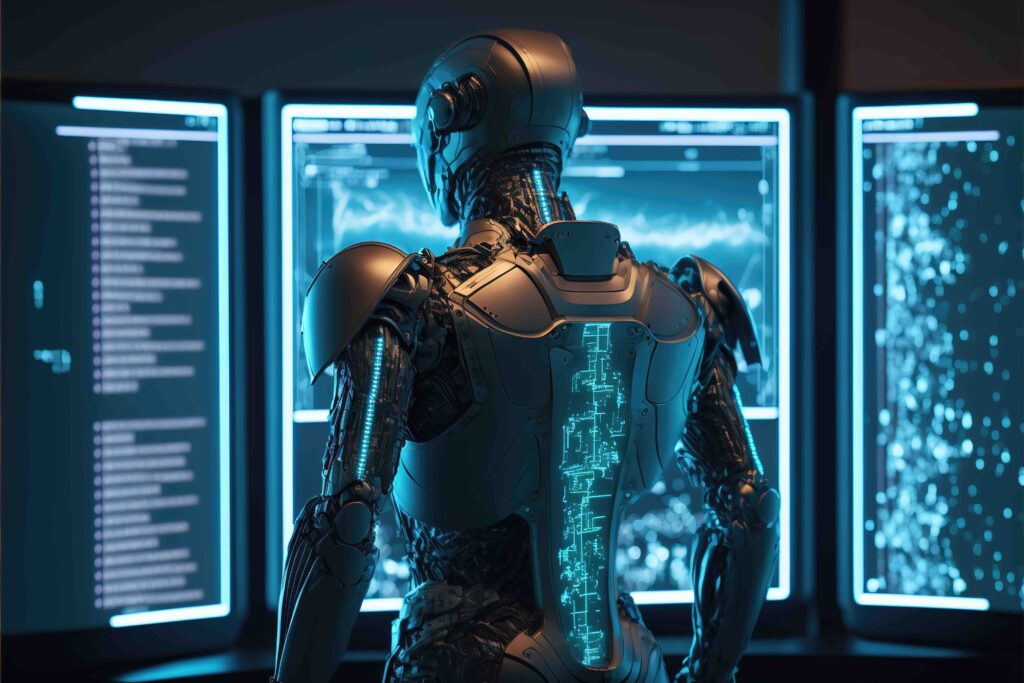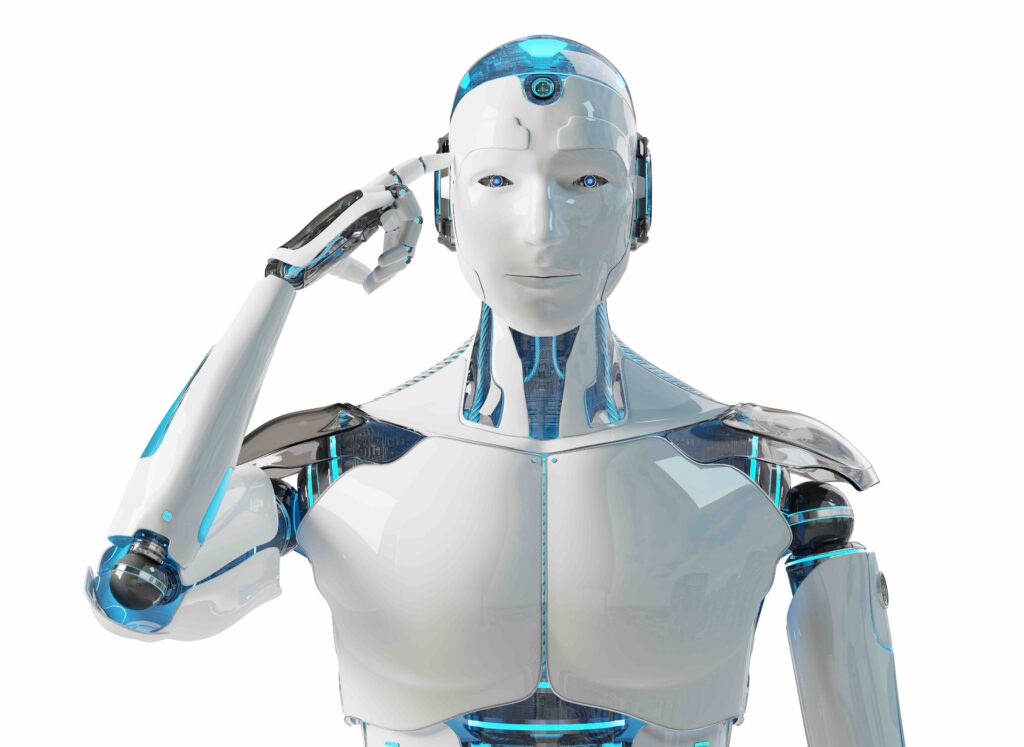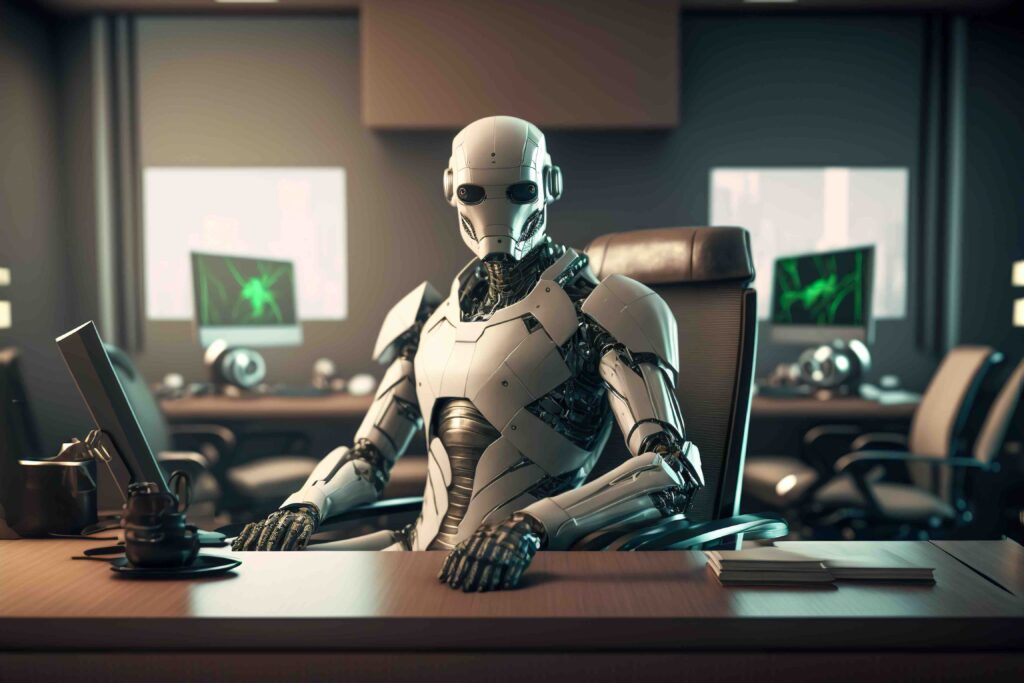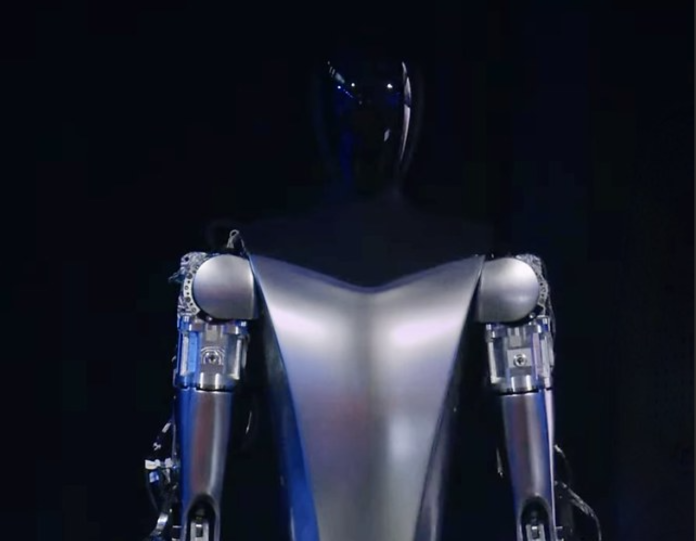A Brave New World of Innovation
Cutting-edge technology has revolutionized our world in countless ways. From medical advancements to communication tools, innovative technologies have drastically improved our quality of life. As society continues to evolve, so do our technological capabilities, and new innovations are introduced every day.
These breakthroughs have the potential to change the world as we know it. One such innovation is Tesla’s new humanoid robot, which is set to hit the market in 2022.
The robot is designed with human-like features and is capable of performing tasks like a human being. With its advanced capabilities and sleek design, this cutting-edge technology has already sparked excitement and anticipation among tech enthusiasts across the globe.
Introducing Tesla’s Humanoid Robot
The Tesla Humanoid Robot is a highly advanced creation that could change the way we live and work. The robot stands at 5’8” tall, weighs just over 125 pounds, and has two arms and legs like a human being.
Its design mimics that of a person with unique features such as cameras on its head that enable it to see in all directions. This innovative product was first introduced during Elon Musk’s AI Day in August 2021.
According to Musk, this robot will be capable of performing mundane tasks such as running errands or handling household chores that humans find tedious or dangerous. Its advanced manufacturing techniques make it possible for robots like these to become more affordable for widespread use in daily life – such as cleaning floors or assisting those who may need physical help around their homes.
With such groundbreaking capabilities and potential usefulness in everyday life, the introduction of this humanoid robot marks an exciting step forward for both robotics technology and society at large. This new era of automation could potentially lead to a future where robots are commonly used in many areas of life, not just the industrial factory floor.
The Cost of Innovation

The High Cost of Research and Development
Innovation comes at a cost, and the development of cutting-edge technology is no exception. Research and development (R&D) can be a lengthy and expensive process that involves testing, designing, and prototyping.
According to a study by Deloitte in 2018, the average R&D expenditure for technology companies was around 8% of their total revenue. For Tesla, this meant spending billions on developing electric cars and other innovative products.
Affecting Pricing with Innovation
Innovation also affects pricing in several ways. First, there are the costs associated with research and development that need to be recouped when the product hits the market.
Then there’s the potential for manufacturing costs to increase as more advanced materials or technologies are used in production. Furthermore, innovation can create higher demand for a product, which allows companies to charge more for it.
This is especially true for cutting-edge technology where consumers are often willing to pay a premium price for new features or capabilities. As such, pricing is often determined not just by production costs but also by supply-and-demand dynamics.
Examples from Other Industries
The impact of innovation on pricing has been seen in various industries throughout history. For example, when Samsung launched its first curved-screen TV in 2014, it came with a hefty price tag of $9000 – nearly three times as much as comparable flat-screen models at the time due to its innovative design.
Similarly, Apple’s iPhone X hit shelves with a starting price point of $999 – the highest launch price ever for an iPhone model – driven largely by new technical features such as facial recognition software and wireless charging capabilities. Ultimately, while innovation can lead to amazing technological advancements that change our lives for the better; it’s also important to consider how it affects pricing and accessibility of these products.
The $20,000 Price Tag
When Tesla CEO Elon Musk unveiled their new humanoid robot, many were excited about the possibilities this cutting-edge technology could bring. However, some were taken aback by its hefty price tag of $20,000. So what justifies this cost?
Let’s break it down. Firstly, it’s important to note that the price tag includes both the hardware and software necessary to operate the robot.
The Tesla Humanoid Robot is designed to be an all-in-one solution for companies looking to automate certain tasks, so the cost reflects that. Additionally, the robot is highly customizable and can be programmed for a variety of uses.
Breakdown of the Tesla Humanoid Robot’s Price Tag
Of course, not everyone needs an all-in-one solution and may only require certain components of the robot. For those customers, Tesla has stated they will sell individual parts of the robot at a lower cost than purchasing it as a whole.
The price also reflects the level of engineering that goes into designing such a complex piece of machinery. The robot is equipped with advanced sensors and AI technology that allows it to adapt quickly to its environment and perform tasks with precision.
Comparison to Other Humanoid Robots in the Market
When compared to other humanoid robots on the market like Boston Dynamics’ Atlas or SoftBank Robotics’ Pepper, the Tesla Humanoid Robot falls within a similar price range. However, unlike these robots which are designed for specific industries or tasks (such as manufacturing or customer service), Tesla’s robot is meant to be adaptable across multiple industries and use cases. Overall, while $20,000 may seem like a steep price tag for some individuals or businesses looking into automation solutions, it’s important to consider what you’re getting for your money – a highly customizable humanoid robot equipped with advanced AI technology capable of performing complex tasks in a variety of industries.
Features and Capabilities

Overview of the Tesla Humanoid Robot’s Features
The Tesla Humanoid Robot is a marvel of engineering and design, boasting a wide range of features that make it stand out from other robots in the market. For starters, it is equipped with advanced sensors and cameras that allow it to navigate complex environments with ease.
It has a remarkable ability to recognize faces, objects, and even emotions, making it an ideal companion for individuals who need assistance with daily tasks. Another noteworthy feature of the Tesla Humanoid Robot is its dexterity.
Its arms are equipped with multiple joints and sensors that enable it to perform intricate tasks such as pouring drinks or picking up objects without causing any damage. Additionally, its legs are designed for stability and balance, allowing it to move around smoothly even on uneven surfaces.
Discussion on How These Features Justify Its Price
Some may argue that the price tag associated with the Tesla Humanoid Robot is exorbitant. However, when you consider its advanced features and capabilities, it becomes apparent why this robot costs as much as it does.
For instance, the robot’s sensors are made using state-of-the-art technology that requires significant investment in research and development. The same can be said for its intricate arm joints which require precision engineering techniques to ensure they function correctly.
Furthermore, designing a robot that can recognize faces and emotions is no easy feat. The Tesla team invested significant time into machine learning algorithms that enable this feature.
The result is a robot that can provide companionship to those who need it while helping them accomplish day-to-day tasks independently. While $20k may seem excessive at first glance, when you consider what goes into creating such advanced technology like the Tesla Humanoid Robot – years of research & development combined with cutting-edge features & unparalleled performance – there’s no question about its worth.
Potential Applications

Revolutionizing Industries with Tesla’s Humanoid Robot
The Tesla Humanoid Robot is a groundbreaking innovation that has potential applications in a variety of industries. The manufacturing industry, for example, could utilize the robot to increase production efficiency and accuracy.
The robot could perform repetitive tasks that would otherwise be monotonous and time-consuming for human workers. This would allow human workers to focus on more complex tasks, thereby increasing overall productivity.
In healthcare, the Tesla Humanoid Robot could assist medical professionals in performing certain procedures or tasks. For example, the robot’s advanced sensors and dexterity could be useful during surgeries or when administering medication to patients.
This would not only increase efficiency but also reduce the risk of errors during medical procedures. Additionally, the retail industry could see benefits from using humanoid robots like Tesla’s.
The robots could assist shoppers in finding items or answering questions about products. They could also help retailers manage inventory by scanning shelves and keeping track of stock levels.
Affording the $20,000 Price Tag
While the cost of the Tesla Humanoid Robot may seem prohibitive for some businesses, there are industries that may have no issue affording it. For example, large manufacturers that produce high-value goods such as automobiles or aerospace components may find it worthwhile to invest in a technology that can increase productivity and accuracy while reducing costs associated with manual labor.
Similarly, hospitals may see significant benefits in investing in a humanoid robot capable of performing certain medical procedures or tasks with precision and speed. Furthermore, larger retail chains may have enough capital to invest in such technologies to improve customer experience while reducing labor costs associated with hiring more employees.
However, smaller businesses or startups may find it challenging to justify investing such a significant amount into cutting-edge technology like this humanoid robot. Nonetheless, as technology becomes increasingly integrated into various industries over time and the cost of production decreases, it is likely that even smaller businesses may be able to consider integrating similar technology in the future.
The Future of Robotics Pricing
Speculation on how pricing for robotics will evolve in the future
As with most technological advancements, it’s likely that the cost of robotics will decrease as they become more mainstream. As competition among companies increases and production costs decrease due to mass production, the price point for advanced robots like Tesla’s humanoid robot will likely drop to a more affordable level.
It’s also possible that advancements in AI and machine learning could make robots even more efficient, leading to reduced production costs and lower prices. Another factor that could affect pricing in the future is government regulation.
As robots become more integrated into our everyday lives, it’s possible that governments may start to regulate their use and sale. This could lead to an increase in production costs if companies have to comply with regulations or obtain certifications before releasing their products onto the market.
Discussion on potential factors that may affect pricing
There are several potential factors that may affect the pricing of advanced robotics in the future. One major factor is consumer demand. If there is a high demand for these types of products, companies may be able to charge a premium price for them.
On the other hand, if demand is low or there are many competitors offering similar products at a lower price point, companies may need to adjust their prices accordingly. Another factor is advancements in technology itself.
As technology continues to advance at a rapid pace, it’s possible that new innovations could lead to even more advanced robots at lower production costs. However, it’s also possible that certain components or materials required for building these robots could become scarce or expensive over time.
Ultimately, predicting how pricing for advanced robotics will evolve in the future is difficult as many variables come into play. However, one thing is certain: as technology continues to advance and becomes more widely adopted by society, we can expect prices for these types of products to become more affordable over time.
Conclusion
Throughout this article, we have explored the fascinating world of cutting-edge technology and its impact on society. From the Tesla Humanoid Robot’s impressive features to its hefty $20,000 price tag, we have discussed the complexities of putting a price on innovation. We delved into the cost of research and development for cutting-edge technology, and how innovation affects pricing.
We compared Tesla’s humanoid robot to others in the market and explored its features and capabilities that justify its high price tag. We also looked into potential applications for this type of technology across various industries.
As we conclude our discussion on putting a price tag on cutting-edge technology, it is important to acknowledge that these advancements are not just about expensive gadgets or toys – they have real-world applications that can improve our lives. While the cost may be steep for some, innovative technology like Tesla’s humanoid robot has the potential to revolutionize industries like healthcare and manufacturing by increasing efficiency and reducing costs.
As we move forward into an ever-evolving technological landscape, it is important to consider not only the monetary value of these advancements but also their impact on society as a whole. And with companies like Tesla leading the way in innovation, we can look forward to an exciting future filled with new possibilities and opportunities for growth.
Disclaimer:
The views, thoughts, and opinions expressed in this article belong solely to the author, and not necessarily to the author’s employer, organization, committee or other group or individual. While every caution has been taken to provide readers with the most accurate information and honest analysis, please use your discretion before taking any decisions based on the information in this article. The author will not compensate you in any way whatsoever if you ever happen to suffer a loss/inconvenience/damage because of/while making use of information in this article.



